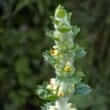Background
- About twenty-five species of squill have been described. Red squill and white squill varieties are distinguished by herbalists. No essential difference exists in the medicinal properties of the two kinds. The bulb has been used mainly as a stimulant, expectorant and diuretic. The fresh bulb is slightly more active medicinally than the dried bulb, but it also contains a sticky acrid juice that can cause skin inflammations.
- Squill seems to have cardiac effects similar to digoxin, although to a lesser degree, due to its poor absorption. Therefore, serious caution is indicated before its use.
References
- Court WE. Squill - energetic diuretic. Pharm J 1985;235:194-197.
- Dallari A, Barbaresi F. [Clinical experimentation with a cardiokinetic extracted from squill: 3-beta-ramnoside-14-beta-hydroxy-delta-4,20,22-bufatrienolide (proscillaridine A)]. Clin Ter 1965;35(2):126-141.
View Abstract - Stauch M, Grewe N, Belz GG. [Effect of proscillaridin-4'-methylether on pressure rise velocity in the left ventricle of patients with coronary heart disease (author's transl)]. Klin Wochenschr 1977;55(14):705-706.
View Abstract - Tuncok Y, Kozan O, Cavdar C, et al. Urginea maritima (squill) toxicity. J Toxicol Clin Toxicol 1995;33(1):83-86.
View Abstract - Walli F, Grob PJ, Muller-Schoop J. [Pseudo-(venocuran-)lupus--a minor episode in the history of medicine]. Schweiz Med Wochenschr 1981;111(38):1398-1405.
View Abstract







